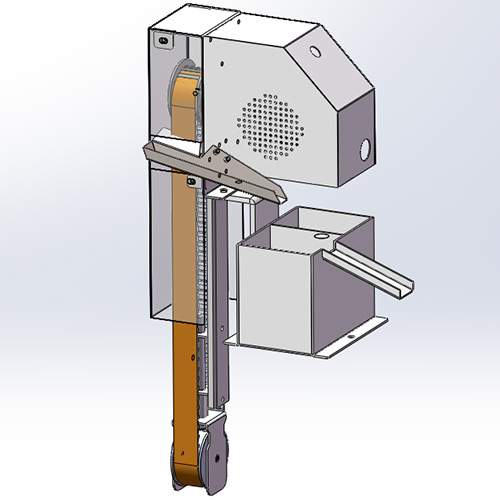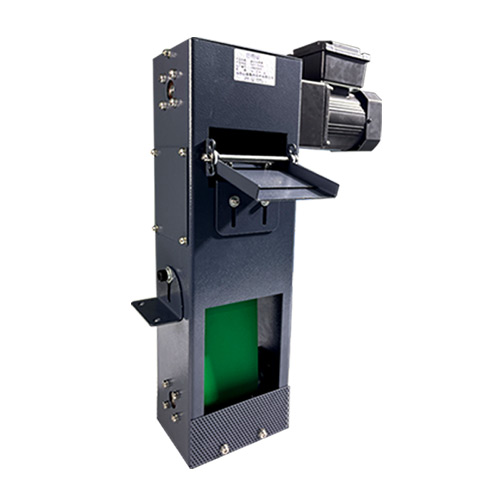Welcome to My Blog!
Before we dive into the content, if you’re interested in our products or have any questions, please feel free to visit our Contact Us page on the website. Our team is ready to assist you with inquiries, orders, or any support you may need.
Now, let’s get started on our journey together. I hope you find the content here insightful, engaging, and valuable.
Table of Contents
Industrial oil skimmers are essential tools for businesses that deal with oil-contaminated liquids, from CNC machining coolant to wastewater treatment. Choosing the right oil skimmer for your business can improve efficiency, reduce operational costs, and ensure compliance with environmental standards. This guide will help you understand industrial oil skimmers, compare different types, and make an informed decision tailored to your business needs.
Understanding Industrial Oil Skimmers

What is an Industrial Oil Skimmer?
An industrial oil skimmer is a device designed to remove oil, grease, and other hydrocarbons from liquid surfaces. These skimmers are widely used in manufacturing plants, food processing factories, automotive workshops, and wastewater treatment facilities. They help prevent contamination, reduce disposal costs, and maintain cleaner work environments.
How Industrial Oil Skimmers Work
Oil skimmers work by separating oil from water or other liquids using mechanical, chemical, or floating mechanisms. Most common models, such as belt, disc, and tube skimmers, continuously remove oil from liquid surfaces, allowing businesses to maintain efficiency without manual intervention.
Types of Industrial Oil Skimmers (Belt, Disc, Tube, and Floating)
- Belt Skimmers: Ideal for large surface areas, they use a continuous belt to collect oil.
- Disc Skimmers: Compact and effective for smaller tanks or coolant systems.
- Tube Skimmers: Suitable for light oils and smaller volumes of contamination.
- Floating Skimmers: Often used in wastewater treatment to remove oil on the surface of large open tanks.
Key Benefits of Using an Oil Skimmer in Your Business
- Reduces environmental compliance risks
- Decreases maintenance costs for machinery
- Enhances coolant and fluid longevity
- Improves workplace cleanliness and safety
Identifying Your Business Needs
Assessing Your Industry Requirements
Different industries require different types of oil skimmers. CNC machining, metalworking, automotive, chemical, pharmaceutical, and food processing facilities all face unique challenges in oil separation.
Determining Oil Type and Contaminant Levels
Identify whether the oil is light, heavy, or mixed with other contaminants. This affects skimmer selection, as some models are more efficient at handling heavy oils or emulsified mixtures.
Estimating Required Oil Skimming Capacity
Calculate how much oil your process generates daily. Skimmer efficiency is usually measured in gallons per hour, helping you choose a model that matches your operational scale.
Comparing Different Types of Industrial Oil Skimmers

Belt vs Disc vs Tube Oil Skimmers
Belt skimmers are ideal for large volumes, disc skimmers for moderate volumes, and tube skimmers for smaller or delicate applications. Selecting the right type ensures optimal performance and cost-effectiveness.
Floating vs Stationary Skimmers
Floating skimmers adjust automatically to changing liquid levels, whereas stationary skimmers are fixed. Consider tank size, liquid depth, and maintenance ease when deciding.
Pros and Cons of Each Type
Each skimmer type has its advantages and limitations. Belt skimmers may require more maintenance but handle high volumes efficiently, while disc skimmers are compact but have lower capacity.
Factors to Consider Before Purchase
Skimmer Size and Capacity
Choose a skimmer that can handle your daily oil production without overloading. Oversized skimmers may be costly, while undersized models may be ineffective.
Material Compatibility with Oils and Chemicals
Ensure that the skimmer’s materials are compatible with the specific oils, coolants, or chemicals in your process. Stainless steel, polypropylene, and other resistant materials are common options.
Power Requirements and Operational Efficiency
Consider energy consumption and operational costs. Efficient skimmers save money while maintaining consistent oil removal.
Budget and ROI Considerations
Evaluate the total cost of ownership, including installation, maintenance, and replacement parts. The right skimmer should provide measurable savings over time.
Installation and Maintenance Considerations
How to Install an Industrial Oil Skimmer
Installation varies by type but generally involves securing the skimmer to the tank or fluid reservoir and ensuring proper alignment with the liquid surface.
Routine Maintenance Tips
Regular cleaning of belts, discs, or tubes is essential to maintain efficiency. Check motors, chains, and pulleys for wear, and replace parts as needed.
Troubleshooting Common Issues
Common problems include reduced oil pickup, worn components, and improper alignment. Addressing these issues promptly ensures long-term performance.
Replacement Parts and Longevity
High-quality skimmers can last for years if maintained properly. Using genuine replacement parts helps extend the skimmer’s lifespan and efficiency.
Industry-Specific Applications
CNC Machining and Metalworking
Oil skimmers remove coolant and cutting oil from machine tools, prolonging fluid life and improving machining precision.
Automotive Industry Applications
Automotive plants use skimmers to manage hydraulic fluids, lubricants, and process oils in large-scale manufacturing operations.
Chemical and Pharmaceutical Plants
In chemical processing, skimmers prevent oil contamination in tanks and reactors, ensuring product quality and regulatory compliance.
Food Processing and Power Plants
Oil skimmers maintain hygiene and efficiency in food production facilities and prevent excess oil buildup in power plant cooling systems.
Cost and Supplier Comparison
Price Ranges for Different Industrial Oil Skimmers
Skimmer prices vary by type, capacity, and materials. Budget-friendly models exist for small businesses, while industrial-scale skimmers are more expensive but handle higher volumes efficiently.
Comparing Manufacturers and Distributors
Research reputable suppliers, read reviews, and consider after-sales support. Reliable manufacturers provide warranties, maintenance guides, and replacement parts.
Tips for Getting the Best Value
Balance initial cost with efficiency, maintenance requirements, and expected lifespan. Investing in a high-quality skimmer often saves more money in the long term.
Maximizing Efficiency and Performance

Optimizing Skimmer Placement
Place skimmers strategically to maximize oil removal and minimize interference with other processes.
Monitoring Oil Removal Rates
Track the volume of oil removed to ensure the skimmer is operating at peak efficiency. Adjust as necessary for seasonal or process changes.
Integrating with Other Waste Management Systems
Combine skimmers with filters, separators, and recycling systems for complete fluid management and cost savings.
Safety Benefits of Proper Oil Skimmer Usage
Properly maintained skimmers reduce the risk of spills, slippery surfaces, and environmental hazards, promoting workplace safety.
Conclusion
Choosing the right industrial oil skimmer is crucial for operational efficiency, cost savings, and environmental compliance. By understanding your business needs, comparing skimmer types, considering maintenance, and evaluating costs, you can select a solution that optimizes oil removal and keeps your operations running smoothly.
FAQ
What is an industrial oil skimmer?
An industrial oil skimmer is a device used to remove oil, grease, and hydrocarbons from liquid surfaces, helping maintain cleaner fluids and reduce maintenance costs in industrial applications.
How do industrial oil skimmers work?
They use mechanical, floating, or chemical methods—like belts, discs, or tubes—to continuously separate oil from water or other liquids.
Which industries use industrial oil skimmers?
Common industries include CNC machining, automotive, chemical, pharmaceutical, food processing, and wastewater treatment facilities.
How do I choose the right oil skimmer for my business?
Consider your oil type, contaminant levels, tank size, daily oil production, and maintenance requirements to select the appropriate skimmer type and capacity.
How often should an industrial oil skimmer be maintained?
Routine maintenance depends on usage, but most skimmers should be checked weekly for belt, disc, or tube wear, cleaned regularly, and lubricated as recommended by the manufacturer.
Need Help Choosing the Right Industrial Oil Skimmer?
If you’re unsure which industrial oil skimmer is best for your business or application, our experts are ready to assist. Contact us today for a personalized consultation and ensure your operations stay efficient, compliant, and cost-effective. Don’t wait until downtime or contamination affects your production—get in touch now to optimize your oil management system!



